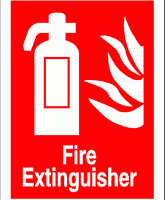Brief Background of ATEX Directives
Despite the fact that the ATEX Directives are applicable only within the European Union (EU), it is quite common that their principles are increasingly being applied by users worldwide. They derive their name from the French words ''ATmosphères EXposibles'' which stands for explosive atmospheres (environments). It is to be noted however that in North America, a different explosive atmosphere area classification is applied.
Before the advent of the ATEX Directives, the installation of electrical equipment in a potentially explosive area was a matter of just selecting equipment which was certified for the appropriate area. Of course, there were relevant standards put in place, like IEC standards, for ensuring safety but these standards did not provide any certification.
With the arrival of the ATEX Directives, both the designer as well as the equipment manufacturer are directly concerned and involved. All driven equipment is now specifically covered by the requirements of the Directives, as is the compatibility of all installed equipment.
ATEX components
ATEX Directives are divided into two major branches: ATEX 95 and ATEX 137.
ATEX 95, the Product Directive
ATEX 95 has the aim to ensure that the equipment used in hazardous areas is the proper one and meets applicable standards.
ATEX 137, the Worker Protection Directive
ATEX 137, focuses on the responsibilities of the end user, ensuring that equipment and facilities are managed and operated responsibly.
Starting from July 2003, all organizations operating within the EU must follow these Directives to protect employees from explosion risks in areas with an explosive atmosphere. The main difference between these two ATEX Directives legs is the following: ATEX 95 defines products/equipment into Categories (Category 1, 2 and 3) and Groups (Group I, II), whereas ATEX 137 defines the Zones for gas and dust, indicating which Category of equipment is to be used in each Zone.
In general, Group I is applicable for mines (either surface or underground), whereas Group II is used for explosive areas other than mines. Electrical apparatus belonging to Group II are further classified into explosion groups: Group IIA, IIB or IIC. The danger increases as we move on from Group IIA to Group IIC.
Classification criteria for differentiating gases between Group IIA, IIB and IIC are the Maximum Experimental Safe Gap (MESG) and the “Minimum Ignition Current (MIC)”.The MESG and MIC are determined for the various gases and vapors according to a specified test arrangement.
Category 1 refers to very high degree of safety (safe even two faults occur simultaneously), Category 2 refers to high degree of safety (safe even when a fault occurs), whereas Category 3 refers to normal degree of safety (safe during normal operation).
The table below presents an overview of the Zones and allocation of equipment according to the relevant Category (G is the abbreviation for Gas, vapor and mist whereas D is the abbreviation for Dust)
Based on what we have discussed above, the typical marking in accordance with the ATEX Directive (94/9/EC) is shown below






